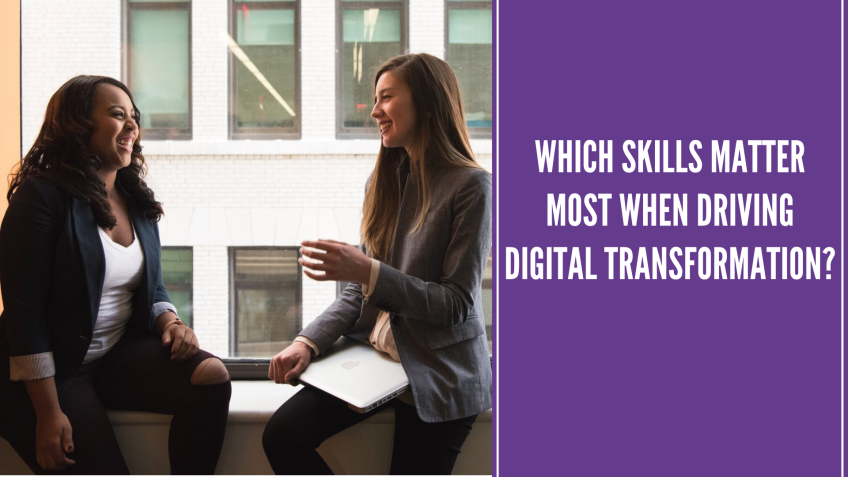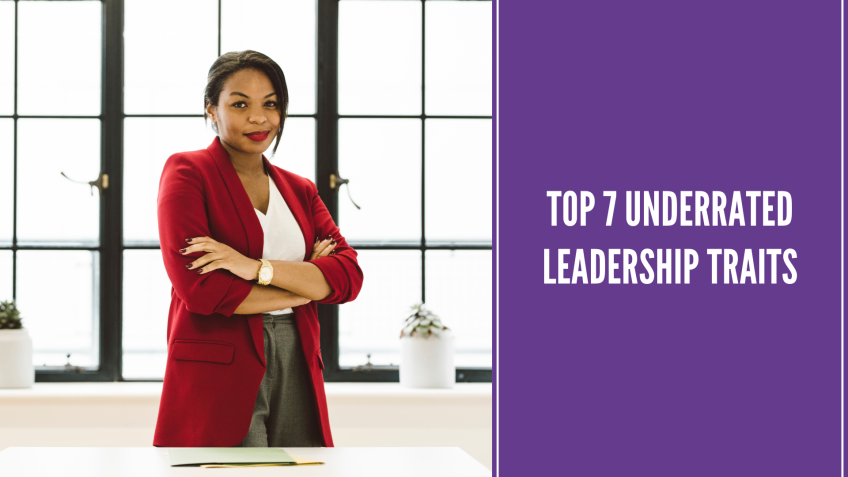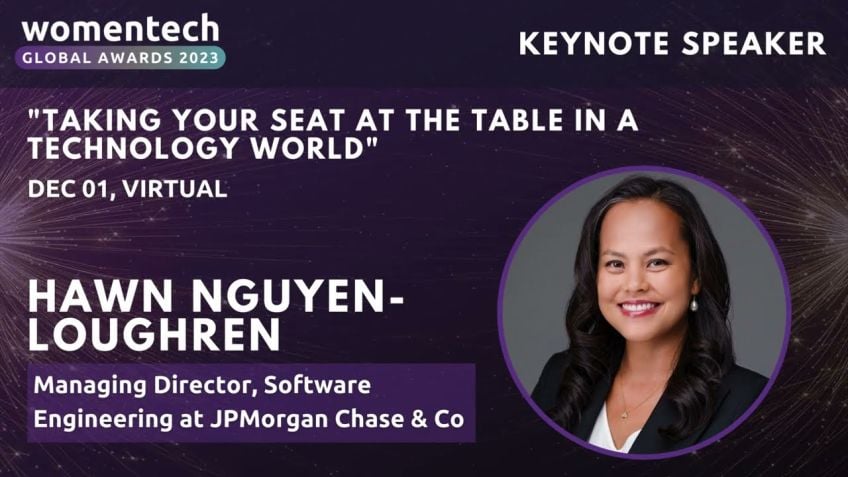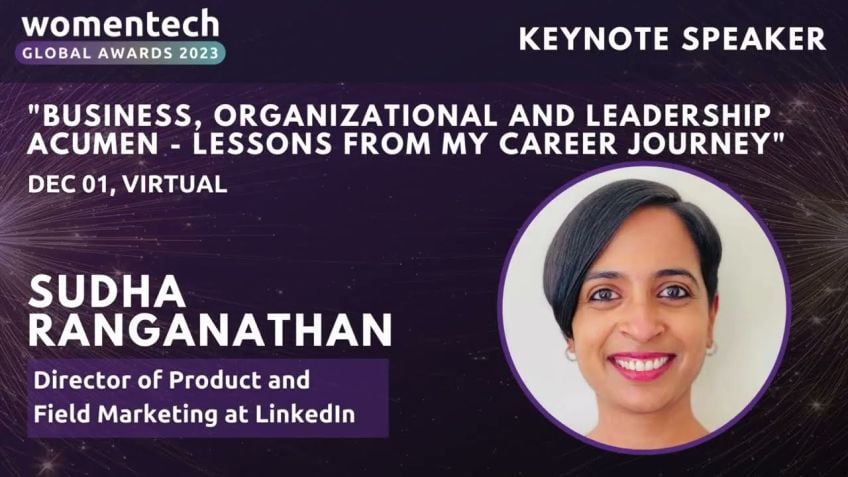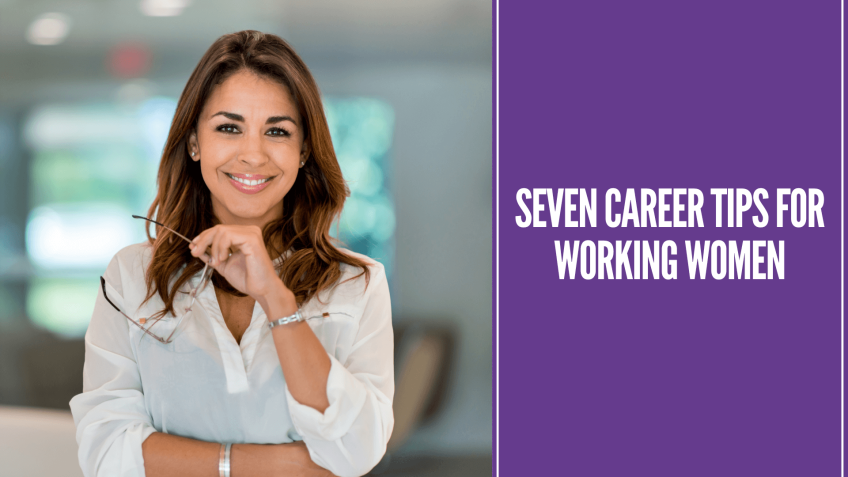Designing a Sustainable Career: How Curiosity and Experimentation Can Lead the Way by Erin Buonomo
An Unveiling by Erin Bonomo at the Inspired Leaders Summit
Passionate about fostering inclusivity and supporting future leaders while transforming businesses towards resilience and sustainability, Erin Bonomo, director of design IBM, sustainability software at IBM, recently delivered a compelling talk at the Inspired Leaders Summit and Global Awards ceremony. She discussed her journey, major lessons and insights drawn through her life and career while integrating human-centered design and technology.
Designing a Sustainable Career: From a Passion for Problem-Solving to Life-Changing Epiphanies
Erin began her keynote by looking back at her career, which initially started with an insatiable curiosity about technology. Growing up, she bonded with her father over discussions about his work in tech, and even participated in building computers. These experiences had a profound influence on her future choices.
She followed her innate interest for problem-solving and technology into computer science, which led her to work with IBM. Her 18-year journey thus far with IBM has granted her multiple opportunities to grow and learn with eight different roles across three diverse functions and varied business units.
However, she didn't shy away from admitting that there were times she felt directionless or stuck - but each challenge helped her learn to treat her career like a prototype and reframe her problems.
Treating Your Career as a Prototype
- Recognizing the Passion Paradox: Erin shared an early revelation about passion - "Passion is the result, and not the source, of good life design." With continuous exploration and curiosity, she realized the beauty of multiple passions and the multidimensionality of life.
- Reframing the Career Ladder into a Career Playground: Erin believes life is fluid and messy, growth can occur at varied paces and times, and purpose can evolve. This belief led her to transition from a developer to a product manager, where she chose to learn and grow with changing times.
- Identifying the multiple versions of oneself: Erin urges professionals not to shy away from embracing every aspect of their identity - be it professional, personal, or a doting mother. For her, each persona is like peeling another layer, revealing a new facet of her personality.
- Embracing discomfort: Erin confessed that feelings of discomfort or feelings of being an impostor made her recognize growth opportunities and learn new skills.
Embracing Design Thinking in Career Planning
Erin subsequently discussed how design thinking, characterized by observing, reflecting, and making, became her go-to approach to address career problems. The principles of design thinking, focusing on human outcomes, diversity of thought and action, and restless reinvention, became significant guiding forces of her career trajectory.
Familiar with the principles of empathy in software designing, Erin applied the same to strike a balance in her life. She encouraged prototyping the career, welcoming ideas, involving others in the journey, and trying different paths.
Just like Madonna, the pop icon who consistently reinvented herself over four decades, Erin believes career reinvention is a necessity. The key lies in empathy, self-reflection, intuition, courage and building resilience amid life's occasional setbacks.
Moving Forward: Leaving a Mark
Leaving the audience with a final Dolly Parton quote – "If you don't like the road you're walking, start paving another one," Erin's inspiring talk resonated with hundreds of attendees who lauded her for turning barriers into positives and inspiring change.
Ultimately, Erin distilled valuable insights from her career journey to help others navigate their own. The concept of treating one's career like a prototype and reframing professional paths can indeed pave the way for a meaningful, fulfilling career journey.
Video Transcription
And now it's my pleasure to welcome on the stage. Our first keynote speaker, Erin Bonomo, director of design IBM, sustainability software at IBM. Erin oversees the design of A I powered solutions.Hi, Erin,
hi,
great to have you with us today.
Great to be here. I'm super impressed by all of the stats that you just showed. This is an exciting event at
the power of community. So thank you so much for your kind words. And let me just share a little bit more about Erin and the impressive work that she's doing. Erin oversees the design of A I Power solutions that enable clients in asset intensive industries to transform and build resilient, efficient and sustainable business operations by marrying human centered design and technology with her passion for fostering inclusivity and supporting future leaders.
Erin prides herself on engaging in and supporting communities within IBM and the tech industry, her session design and a sustainable career, how curiosity and experimentation can lead the way will reveal the tactics on how to treat your career like a prototype and reframe your challenges.
So super excited to have you with us once again, Erin and the stage is yours?
Awesome. Thank you. Just gonna share my screen real
quick. I will stay just a second.
Let me know. I'm ready to go all set. So
the stage is yours. Please enjoy. I will be back for the Q and A part if you have time.
Awesome. Well, thank you all. I'm so excited to be here. Um Good morning, good afternoon with such this global audience. You know, it's really exciting to see so many women in tech. And when we think about it, we all have different experiences, backgrounds and career journeys, but a common pattern that we likely all face is that we may hit crossroads during our career where we question our focus, our purpose, our impact and maybe you're just getting a little bit curious of what else is out there.
And we all want to understand what is that secret to a well designed sustainable career. And when you think about sustainability, it's a critical business imperative. Our present choices and actions are gonna have a huge long term impact on future generations. The same could be said about our own careers. The actions you take today are going to have an impact on your future life. So de designing a sustainable career is one of the best things you can do for your own long term personal and professional success. But what is it really, it's one that's gonna endure over time. It's gonna grow with you through the years. It's gonna carry you through both good and challenging times. It's gonna enable you to stay happy, healthy, productive, employable through its span. But it's also gonna be a perfect fit for you whenever and wherever you're at in your career. So I'm here to talk to you about my own experience as I kind of travel along my own pursuit of a sustainable career to start. I'll tell you a little bit about me. I'm an engineer um by, by trade, I'm a wife, I'm a mother, I'm a people leader and an IBM. Er, and when I look back, my interest in technology started really on in my life. My father is in tech. So him and I used to talk a lot about what he did day to day. We used to build computers together back in the day. Um I didn't know it back then but those moments made a huge impact on my future choices.
I've been an IBM er for about 18 years, but I'm really proud of the multidimensional career that I've had in this one company where we're using technology to drive change into business in the world. I've held eight different roles. I've been in three different functions. I've worked on roughly 10 plus product lines and I've worked in three different business units within one company, but my road was not always clear and I've had many points where I felt stuck or confused of the direction that I wanted to take. So I'm gonna share with you my journey, some aha moments I learned along the way and how I adopted a growth minded experimental approach to help me spark some positive change and momentum throughout my career. So let me start kind of way back when, back when I was a teenager, I had someone ask me, Aaron, what's your passion? Figure out what your passion is and then figure out what school you wanna apply to and then you can start your career. This was a daunting question for a teenager. What if I made the wrong decision? What if I had no idea what my passion was? Honestly, I liked a lot of things, but I wasn't sure exactly what I had a passion for. But what I didn't know is that less than 20% of people have one single passion in our lives. I wish I had known that back then. It was something I learned upon along the way. But I had a epiphany early on in my career.
Passion is not the result of good life design. Passion is the result of good life design. It's not the source of it. And it comes really after you discover something you like, you develop master around and you can have multiple passions. So I ended up taking an approach early on where I just chose to explore and get curious. Um I took a wide range of courses, but I found a love for solving problems and harnessing technology to solve those problems. So I made a decision early on that, I was gonna transfer out of my first college to a small engineering school and take on a computer science degree. Well, started off great and made this big momentous decision. And then I failed my first coding class, which I will tell you as a young adult was making me um worried that I had made the wrong decision or self doubting whether I was cut out for this career. Really? That was my first bump in a long series of bumpy roads. Honestly, that's what real life is when you think about it. So I ended up catching my stride. I graduated, I was one of the two females in my graduating class and I landed a job at IBM and this is right after the.com. So I felt lucky just to even have a job at that time.
So things were going well early on, I quickly progressed up the technical track I got promoted. I took on some challenging new projects. I was on my way or so I thought at the time about six years in, I felt like something was missing. Did I really want to do this for the rest of my life was a question that had been circulating in my brain. I was searching really for my meaning for my why for my purpose? And I wanted to spend a time making an impact and deriving a sense of satisfaction from what I was doing. And when you look at these dimensions, really, the sweet spot is right in the middle and I didn't feel like I was in that sweet spot. And when I saw what what other people were doing, I was in my mid twenties at the time, they were rising at the corporate ladder. There was very specific career tracks that you should take, but I wasn't sure if that was really the right track for me. And when you think about it, the the work world changes and evolves and maybe traditional career advice is not long, no longer sufficient. And you needed to reframe how we think about it. And when you think about your why your purpose that could evolve over time as well. So I had my second epiphany, I needed to reframe my approach to career progression. Instead of climbing a career ladder, I needed to approach it like playing on a career playground, which is way more fun.
When you think about it, life is way more fluid, it's not linear, it's somewhat messy. Growth can come in different forms, it can come at different rates and speeds throughout your life and your purpose may evolve and change over time. You just need to be open to that evolution and just enjoy the process and the beauty of it is that we're all in the driver's seat and we can change course if we want. And I had to really think about the fact that it's ok to, to fall, to get bruises along the way to get off this career playground. It really depends on where you are in your stage of life. So at that point, I was still a developer, but I had a desire to, didn't really have a desire to move up this technical track. And I did some serious self reflection and realized I want to learn more about business, how we bring products to market. So I convinced, somehow convinced IBM to pay for my graduate degree. And I spent 3.5 years getting my MB a part time with an intention of shifting into product management. So I finally figured out my career, but of course, life throws you some interesting curveballs. And as you can imagine, my priorities shifted dramatically. I was now a mother of twins, but also a professional and I wanted to make sure that the time I was spending at work was really purposeful, but I also was being granted amazing opportunities that I've been striving for.
I was the lead product manager for a newly acquired product. I'd pick up another product. So my scope scope was growing and things were falling into place, but they weren't falling into the places that I really thought they should be falling into in every aspect of my life. I was feeling stressed out, overwhelmed. I didn't feel balanced. I was questioning whether my future was still at IBM at the time. But I realized I was trying to run away from like an unsustainable stressful situation. So I had to take a step back and realize that the version of myself had changed from what it was before. And I needed to figure out what that version of myself even was. So my next epiphany was really learning like that's OK. There could be many versions of myself. I needed to reframe my life and evolve it into a version that's gonna better serve my interests, my passions and my needs. At that time, I needed to be more like Madonna. If you all know who Madonna is, she's an icon, right? She's evolved herself over the past four decades and I love her quote, which I put on the slide for you all about peeling back the layers and revealing herself. So when I think about my career journey, I think about peeling back my own layers and making choices that may impact my future, but at least are the right choices that are perfectly all right for where I am at this point in time.
So I ended up taking a leap. I obviously stayed with IBM, but I took a job at a new business unit with IBM. I knew one person which was a little daunting and scary at the time. But I was fortunate to build my network and work with exceptional leaders who challenged me pushed me into people leadership positions and led um had me led lead some transformational initiatives. And this led me to my current position as a design executive. This is an exciting move for me, but also it was not easy. I was trying to figure out what an executive IBM even meant. I was leading a new team in a new area of IBM. I wasn't a formally trained designer, so I kind of felt like an impostor in many ways. So this led me to my kind of my last recent epiphany, I needed to embrace these feelings, even if you don't feel good or smart enough, focusing on that's not productive at all. And I needed to put control back in my own hands. So instead I look at these feelings as signals, signals that I have areas to grow and new skills to learn.
So when I look into the future I look for and welcome these feelings, it's a constant reminder to challenge myself when I'm not feeling them, I have to also self reflect to go. Is there a reason why I'm not feeling those feelings? And when I reflect back, my story really is one of curiosity, self exploration and learning. And when I saw what I saw was parallels with what we were doing and what I was learning at IBM. So back around two th 2013, we embarked on this journey where we invested heavily in building up our design and human centered practices within an IBM. So we hired thousands of designers, but we also trained our employees in design thinking and human centered practices. And any designer will tell you that they're very curious problem solvers by nature. They need to deeply understand human needs to make the experiences that they're designing, meet the mark of the users that are gonna be using our software products. So really, when you think about it, it's important for me to understand my own needs at the same deep level. So I can design my own gratifying life experiences. And I was taking these practices and applying to them to how I approach my career. So I'm gonna share with you some of the key tenets of design thinking and I'm gonna try to convince you to be curious like a design thinker. So you can build your creative confidence and apply this practice to your own career planning design thinking.
If you're not that familiar with it, it's just a way of thinking that anyone can use. You don't have to be a designer that really enables you to reframe problems from a human perspective. For us at IBM, it helps us ensure we're focused on the right problems and it also ensures that we're using a more experimental iterative approach to problem solving. It enables us to deliver better products faster. Now, the three principles are really focusing on purposeful human outcomes, having a diversity of thought and empowerment to take action and then Restless reinvention, everything is a prototype. It's we're never done improving it. And these principles can be applied to solving any problem.
And when you think about careers, it's a wicked design problem. It's a problem with no right answer and it requires us to make decisions about a very uncertain future. So what I wanted to do today is talk briefly about design thinking. It's a, it provides us a model for action and we call this model at IBM the loop. It's a continuous cycle of observing, reflecting and making. It helps us understand the f the present envision the future, learn from our experiences and our successes, but also learn from our failures and helps us move forward with intention. And when you think about this process, if you're only observing and reflecting, you might become stuck in analysis paralysis because you're not actually taking any action. And I have felt sometimes like that during my career. But if you're only reflecting and making, you may be effectively flying blind because you may not have all the information you need to make well informed decisions. So it's really important to encompass all parts of the process. Now, this model has helped me get unstuck at points in time, but it has also helped me illuminate a new path to take that I wasn't even aware was an option.
So I'm gonna walk through these phases and just talk a little bit about what you generally focus on. The first step is observing and this is really just getting to know ourselves better through building empathy. When we build software products, we make the effort to truly empathize with our users. So we can see the world as they see it, we understand what they're thinking, what they're feeling, what they're trying to accomplish. What are their pain points so that we can create solutions that will address those and make their lives better. When you think about your career, you're the user in this scenario and it's, you know, gonna require you to be brutally honest with yourself. And that's not always easy and it's not always comfortable, but you really need to set aside your assumptions and be open to having moments of awareness that there may be a problem to be solved or an unmet need in your life. After you've practiced some self, self empathy. The next step is really just to reflect this is where you find patterns to kind of connect the dots to identify the core issue or problem that you're trying to solve and the outcomes you would like to achieve. So at this point, generally, what I would be doing is taking stock of what I'm doing, what my career looks like what my position is and making sure it's aligned to my big picture.
My why those four dimensions that I showed earlier and determine if is something off balance does something not feel right. Um You may also uncover new information about yourself that kind of changes your perception of what your biggest pain point is in your journey. Right now, the trick is to put the finger on, put your finger on the core issue and make sure you're solving the right right issue or right problem. It's also important to know what you know and what you don't know and what you may have questions about generally, what is holding us back from taking action or making change is our own fears or perception of what's in our way. And it's important to understand what those barriers are to success, but don't let them hold you back. And one of the things that I like to do is reframe those barriers into interesting questions such as how might I or how can I and those kind of make you rethink of how you can approach those. You now have a question that you can look for answers to.
So once you spent time understanding the situation, understanding what your biggest pain points are or opportunities around met needs, it's time to actually, you know, envision a future and look to see what outcomes you want to take action on. During the design process. We do this by exploring some big ideas and it's a fun process where we throw stickies on the wall and you know, no holds barred idea generation. You can do the same for yourself where you explore alternative futures, think of how you would want to solve that problem. What are some of the things that you could do and then you want to test your ideas and then reflect on what you learn and you can do this by prototyping your life. During the design process, we use prototypes all the time to test our ideas. Get our concepts in front of people, get feedback and it really um helps us save time and money in the process. When you think about your career ideas, this may be ideas that you just want to try out for size or learn more about before you make a big move. When I think about my career, any role that I was looking to explore, especially the ones that were big transitional moves between functional areas, I prototype what that role might look like and feel like before actually jumping in. And there's a couple ways to do that.
You can do that through conversations. One, there's probably people out there who are living your future, seek those people out, learn from them, involve them in in your process. The other way is also just to test out those those experiences. When I was interested in moving to product management, I sought out individuals who were doing those jobs and I offered my help and engaged in some project work just to learn about what that would entail. And all of this information helped me determine what actions I wanted to take at some points, it was moving and making a change at some points. There was no action at all. I decided I was going to stay with what I was doing. So overall, a design thinking approach can help you solve problems that might seem otherwise unsurmountable. And this has helped me through my career build resilience, get unstuck and really just have the confidence to take more risks. The key here is embracing a continuous cycle of learning improvement and having a bias to action. And it's really important just to be more empathetic with yourself. Self compassion can go a long way to balancing out your emotions and working towards a solution you feel good about, don't get held back by barriers, reframe your challenges into interesting questions, be OK to wander outside your lanes, explore new things, exploit what you've already learned in your career to evolve.
Your career, move into new areas can widen your skill set in your experiences and then treat your career like a prototype. Ask questions, involve others in your ideas and try out multiple ideas for size. Don't limit yourself, but you may want to start small to make some progress.
And lastly, in the words of Dolly Parton, a well known American singer and songwriter. If you don't like the road, you're walking, start paving another one like a design thinker. And yes, I did add that last plot part, sustainable careers. Don't just happen. They're designed through a combination of empathy, intention, intuition and a little bit of courage mixed in and my challenge to you after today. If you find yourself stuck or needing a change in the future, or you're just looking to explore new interesting career paths, think back to how you can use design thinking in the loop to drive you forward and peel back your next layer. Thank you all.
Wow. Thank you so much. What a powerful talk to start our Inspired Leaders Summit and Global Awards. This year, I learned so much and I see that people really loved it and I would love to display some of the comments from Yeva, so inspiring and love it. Kelly JRA also shares as a fellow twin twin mom. I can appreciate this. I have just one child, but I can also appreciate that brought to you and hear amazing comments also from uh turning barriers into positives. And I personally also like that and I think sometimes barriers are even helping us, you know, to navigate the direction. So instead of just like skipping them or trying to overcome, what if you like to kind of have a look at them and discover some interest, direction. And something that you also mentioned is don't uh if you don't like the road you're walking, just pay another one. I think this is brilliant and that's my takeaway from your session today. Thank you so much, Erin. It was really great to have
you with us. The honor to be here,
we have here, everybody, we have here hundreds of comments coming your way. Many thanks. So people really got inspired by your session today and so many things resonated with them. Thank you so much, Erin.

